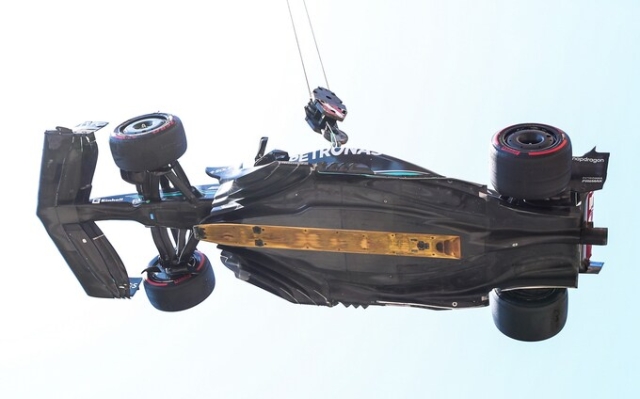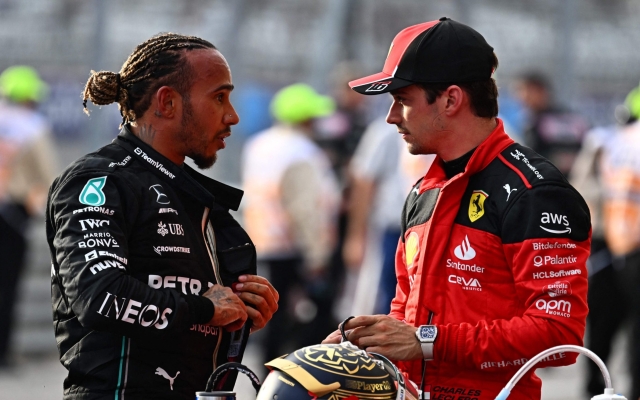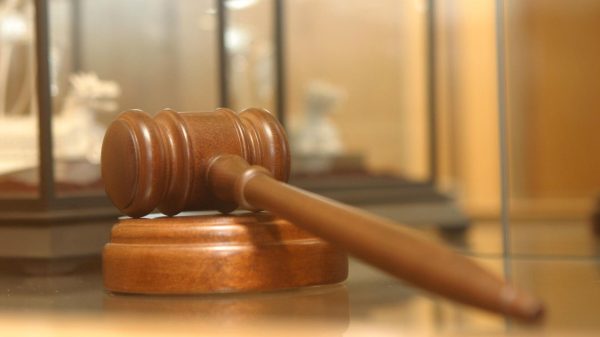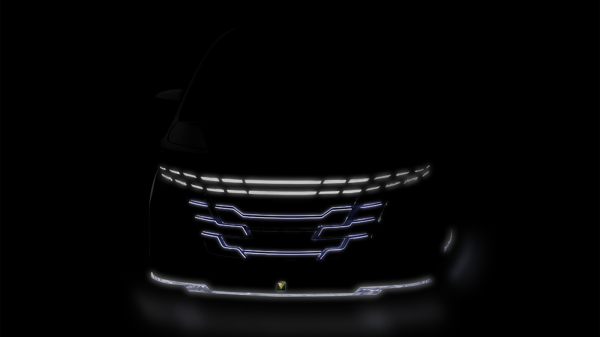 Wooden board, pictured under Lewis Hamilton's car earlier this season in Monaco. Photo: Eric Alonso/Getty Images
Wooden board, pictured under Lewis Hamilton's car earlier this season in Monaco. Photo: Eric Alonso/Getty Images
Lewis Hamilton's second-place finish and his most competitive race of the season was derailed after stewards ruled his car's equipment was not up to code and disqualified him.
At Sunday's US Grand Prix, Ferrari's Charles Leclerc, who finished sixth, was disqualified for the same offence. Telegraph Sport analyzes what happened:
Why were Hamilton and Leclerc disqualified?
Both drivers were penalized for excessive wear on the boards under the floor, which are installed to prevent teams from lowering their cars too low. The depth of the new floor on Hamilton's Mercedes, as well as Leclerc's Ferrari, was judged to be «beyond the threshold», meaning the board or skid block cannot wear down to a thickness of less than 9mm. Based on the results of the race, four cars were randomly selected. Both Verstappen's Red Bull and Norris' McLaren passed technical checks.
 Lewis Hamilton and Charles Leclerc were disqualified for the same thing . Breaking the rules Photo: Chandan Khanna/AFP
Lewis Hamilton and Charles Leclerc were disqualified for the same thing . Breaking the rules Photo: Chandan Khanna/AFP
Mercedes sporting director Ron Meadows, track technical director Andrew Shovlin and reliability chief Richard Lane were called to deal with Hamilton's corner with four FIA stewards, including former British driver Derek Warwick.
However, the FIA statement said: «During the hearing, the team accepted that the measurements taken by the FIA technical team were correct and stated that the high wear on the pads was likely the result of the unique combination of a bumpy track and the sprint race schedule [on Saturday].» which minimized the time spent setting up and checking the car before the race.
“Stewards note that the competitor must ensure that the car complies with the rules at all times during competition.”
The FIA ruled: “In this particular case, the rear skid in the area identified in the Technical Delegate's report was outside the thresholds specified in Article 3.5.9 e) of the FIA Formula One Technical Regulations, which includes allowance for wear. Therefore, the standard fine for violating technical regulations is applied.”
Why is there a board on the bottom of the car?
Following tragedies involving Roland Ratzenberger and Ayrton Senna, the board was introduced at the 1994 German Grand Prix. Since then, a 10mm thick wooden strip has been fitted to the underside of the cars to provide increased ground clearance and create less downforce under the floor. Sliding blocks are also used in Formula 2 and Formula 3 and are a flat rectangle, usually made from a wood composite of the same shape to provide minimum ground clearance.
In recent years, the FIA has mandated that manufacturers also have metal inserts in the blocks that cause sparks when they touch the ground. According to Formula 1 technical specifications, a rectangular anti-skid block must be installed under the center plane of the car. The block is usually made from a material called Jabroc, which is made from beech wood and is made using a composite process, which itself does not restrict the air flow under the car.
What advantage could Hamilton and Leclerc get from their illegal bar?
Running lower may cause ground effect to create more downforce, but it is impossible to know whether they have gained an advantage due to wear.
Telegraph Sport columnist Gary Anderson believes the claim that Hamilton's most competitive results this year is somehow related to the wear of the bar, is “a kind of red herring.”
«I wouldn't say that the fact that the bar itself was worn had a big impact on the performance of the Mercedes,» he said. “The main thing is that these ground effect cars benefit from being close to the ground. But you can only run them so close to the ground, because hitting them harms its performance….
“In terms of importance on Sunday, the wear on the bars is such that at the beginning of the race, when the car consumes more fuel , he will be stronger than at the end of the race. We saw the Mercedes in better shape in that final stint — it had no bar wear at that point and wasn't going out on the road too much. The wear of the bar could have occurred quite early.»
How often do disqualifications happen for breaking the bar?
Just a month after the rules were introduced, Michael Schumacher missed out on victory at the 1994 Belgian race. Grand Prix due to excessive wear on the bars of his Benetton. As a result, rival Damon Hill won in favor of Williams.
However, disqualification from the Grand Prix for any technical reasons is rare. In 2021, Sebastian Vettel's second place in Hungary was written off because his car failed to provide the required fuel sample after the race.
Prior to this, Nico Hulkenberg's Renault and Daniel Ricciardo's were removed from the 2019 Japanese cars. Grand Prix points were deducted for using prohibited driver aids following a protest from Racing Point.
It is believed that no disqualification due to bar wear has occurred since Jarno Trulli was dropped from the Grand Prix standings. at the 2001 USA Championship in Indianapolis, although Jordan successfully appealed the decision. the decision and exclusion were reversed.























































Свежие комментарии